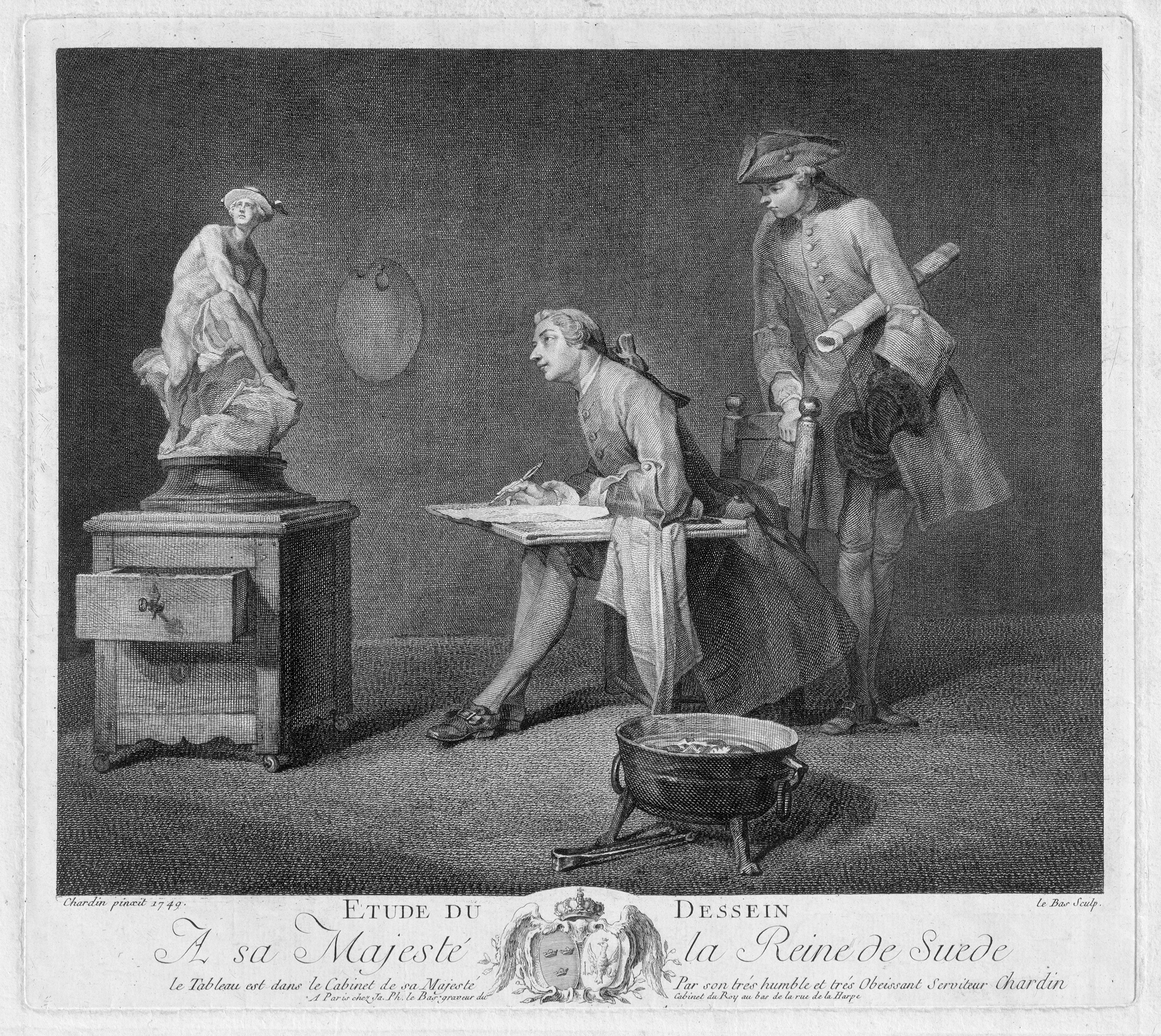Loading the page ...
Jacques Philippe Lebas
(1707–1783, Paris)
Étude de dessein. Etching after Jean Siméon Chardin. 29.3 x 32.9 cm. 1749. Portalis-Beraldi 4. Inventaire du Fonds Français 132.
Jacques Philippe Lebas was taught at an early age by the architectural engraver, Antoine Hérisset, and encouraged by Nicolas-Henri Tardieu and Pierre Crozat, from whose collection he engraved paintings. Lebas was admitted to the Academy in 1743 and appointed Graveur du Cabinet du Roi a year later. He worked after his own designs and reproduced works by Teniers and other 17th century Dutch artists as well as by contemporaries such as Wattau, Lancret, Boucher, Greuze, Chardin, Lorrain and many others. Together with Cochin he produced the series Les Ports de France after Vernet in 1760–67. Lebas exerted considerable influence as the teacher of some of the foremost engravers of the second half of the 18th century, among them Charles Nicolas Cochin the Younger, Simon François Ravenet, Jean-Michel Moreau, Reinier Vinkeles and William Wynne Ryland.
Together with its pendant La bonne éducation, this engraving reproduces two paintings by Chardin that the artist had executed around 1747/48 as a commission for the Queen of Sweden. Both of these reproductive engravings by Jacques-Philippe Lebas were exhibited at the Paris Salon of 1755. In the 1740s Chardin painted almost exclusively genre scenes with figures, the popularity of which was enhanced by the diffusion of reproductive engravings. In 1738 Étienne Fessard made the first engraving after a painting by the artist, an event that was announced in the Mercure de France. This was to be followed in subsequent years by an impressive number of other reproductive engravings, many of them by Charles Nicolas Cochin the Elder (1688–1754), which did a lot to spread Chardin’s fame in Europe.
In a sparsely furnished room we see a youthful draughtsman at work. He is sitting on a chair with a drawing board on his knees. The upper part of his body, which is bent forward over the board, betrays an intense concentration as he critically eyes the object of his study, a terracotta or plaster model of the famous Mercury by the sculptor Jean-Baptiste Pigalle (1714– 1785). Behind the draughtsman a young man wearing a three-cornered hat stands slightly stooped over the back of his chair and observes his work with interest. He is probably a classmate, as the roll of paper under his arm suggests. The allusion to Pigalle’s sculpture was intended by Chardin to honour a friend and colleague. Pigalle had created the terracotta model of Mercury Putting on His Sandals in Rome between 1736 and 1740. The work established his fame and secured his admission to the Academy. A larger and slightly different version in marble was acquired by the Prussian monarch Frederick the Great and is now in Berlin (Bode-Museum, Sculpture Collection). Chardin himself also possessed a version of Mercury.
Chardin’s L’Étude du Dessin is not just one of the most appealing and original portrayals of a young artist at work; the scene also generates a sense of recently acquired self-confidence. The assiduous art student proves that one can become a competent draughtsman not only by following classical models, but also by studying the works of contemporary masters (see catalogue Chardin 1699–1779, edited by Pierre Rosenberg, Paris 1979, pp. 289–293). A superb impression with needle scratches in the left platemark, with margins. Slight creasing in the white margins, minor traces of handling, otherwise in excellent condition. Ex collection Arsène Bonafous-Murat (Lugt 3075).
Contact us for further information